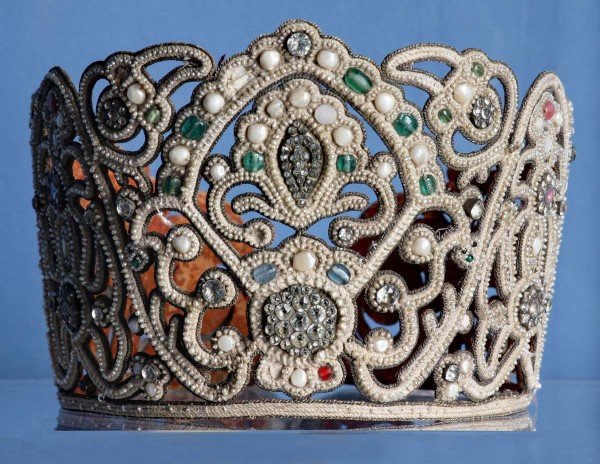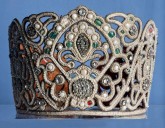Maiden’s Crown Headdress. Last third of the 18th century
Last third of the 18th century
- Pearls, mother of pearl, colored glass, stringing, silk ribbons. 50 х 13
- В-2819
Head ornaments for girls — headbands, crowns and pochyoloks — were decorated with small freshwater pearls or chopped (broken) mother of pearl. For this, small pearls, mother-of-pearl pieces and beads were strung on strong linen thread or horsehair, the latter being more flexible. This type of work is called nizanye, or “stringing”. These strings were used to make the festoons of the headdress’ hanging lower fringe, or podniz, which covered the forehead to the eyebrows. On cut-out (openwork) crowns, the strings of pearls were couched to a white linen cord laid down beforehand to provide greater relief. This method was called sazhenye, or “seating”.
These folk headdresses decorated with pearls, colored glass and chopped mother of pearl imitated to some extent the splendor of their aristocratic counterparts, the diadem and bandeau. The backgrounds on a number of crowns and kokoshniks consisting of gilded foil or foil covered with colored lacquer were also a concession to the times: in the 18th century jewelers “foiled” diamonds to lend them the desired color. The expressiveness of the crowns’ large ornamental motifs, the elegance of their fancy scallopings and the textural and coloristic richness of their non-precious materials make these headdresses true works of art, some of the best examples of folk art culture.

